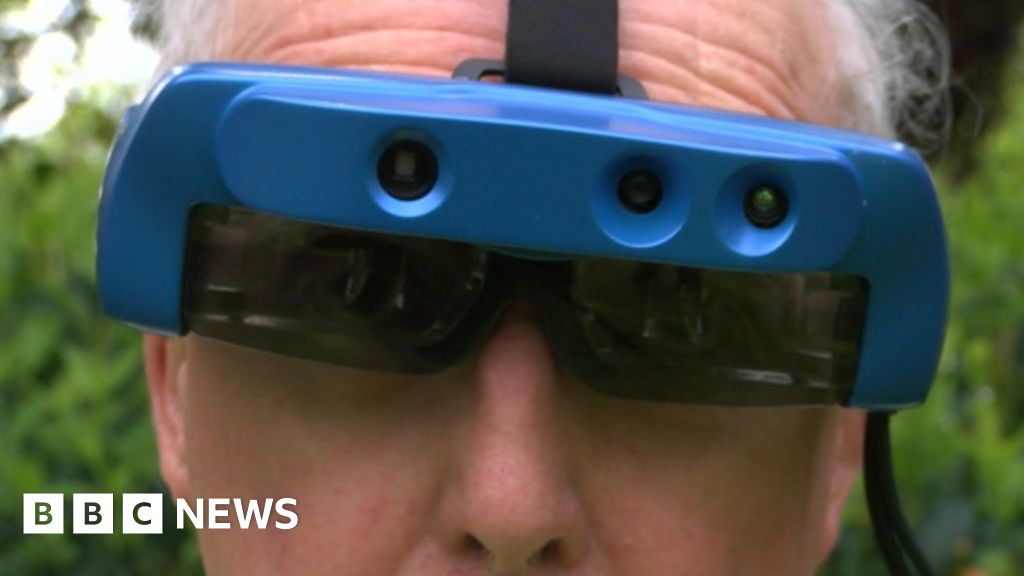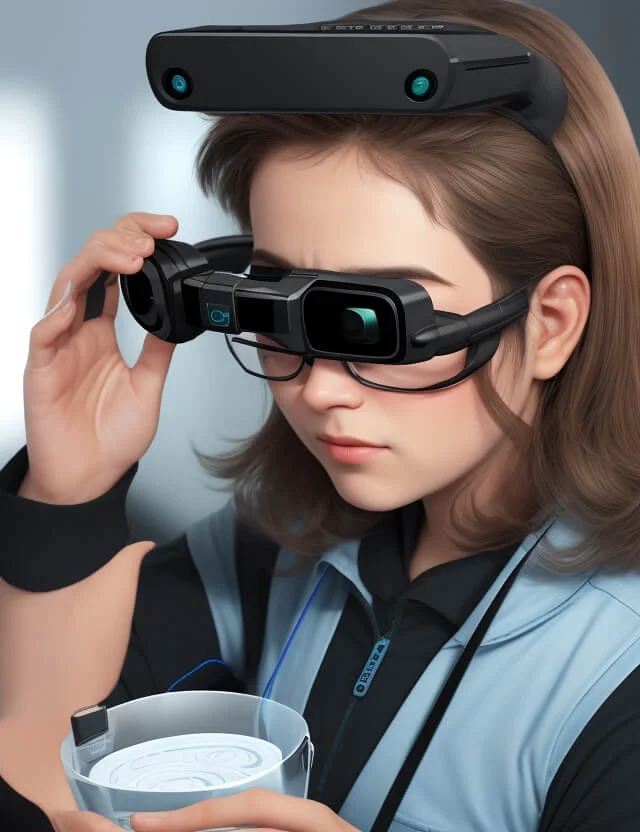AI-Powered Visual Aids: The Next Step in Assistive Technology for the Blind
AI-Powered Visual Aids: The Next Step in Assistive Technology for the Blind
Blog Article
Discover Advanced Assistive Tools for People With Aesthetic Disabilities
The landscape of assistive modern technology for people with aesthetic disabilities is evolving swiftly, providing a range of cutting-edge devices that boost autonomy and involvement. From smart glasses that seamlessly combine visual input with auditory guidance to sophisticated navigating applications that redefine spatial understanding, these tools are improving possibilities.
Smart Glasses Innovations
Smart glasses stand for a significant advancement in assistive technology for individuals with aesthetic problems. These innovative gadgets incorporate various features developed to boost the user's interaction with their atmosphere. Equipped with sensing units and cams, clever glasses can record real-time visual information, which is then processed and communicated to the individual with audio comments or haptic sensations. This functionality allows people to obtain instant summaries of their environments, boosting their capacity to involve and navigate with the globe.
Moreover, advancements in man-made knowledge have even more improved the capacities of smart glasses. Device learning formulas can acknowledge faces, read message, and identify things, making them very useful devices for day-to-day jobs. Users can obtain auditory cues that give context regarding their setting, promoting independence and self-confidence.
Additionally, the ergonomic design and light-weight nature of numerous clever glasses make them appropriate for long term use, making sure convenience while enhancing performance. As these tools continue to advance, they hold the prospective to transform the means individuals with aesthetic problems experience their lives, linking the gap between ease of access and technology. The continuous research and development in this area pledge to broaden the opportunities for wise glasses, making them a vital part of modern assistive devices.
Navigation Application and Devices
Numerous navigation apps and devices have actually arised as necessary sources for individuals with aesthetic impairments, dramatically enhancing their capability to pass through unknown settings. These technologies leverage GPS capability, audio cues, and real-time data to give users with exact navigation aid.
One prominent example is the Aira app, which attaches customers to trained agents who can supply aesthetic summaries of environments and navigating guidance through a live video feed. This service enhances the individual's spatial recognition and self-confidence while browsing. Another noteworthy tool is Seeing Eye GPS, which provides voice-guided navigation and points of interest, enabling users to access important info about their environments.

As technology remains to breakthrough, the growth of a lot more sophisticated navigation tools guarantees to further equip individuals with aesthetic disabilities, helping with smooth mobility and combination right into diverse atmospheres. Such developments are instrumental in advertising an extra inclusive society.
Braille Modern Technology Improvements
Over the last few years, advancements in Braille modern technology have actually considerably transformed how individuals with aesthetic problems access information and involve with the world around them. The development of portable Braille display screens has actually reinvented analysis by permitting individuals to link wirelessly to computer systems, smartphones, and tablet computers. These tools convert message right into Braille in real-time, allowing smooth interaction with digital content.
In addition, cutting-edge Braille printers have emerged, boosting the production of tactile materials. Modern embossers are much faster and much more efficient, permitting the fast creation of Braille papers and academic materials. This effectiveness reduces the moment and expense connected with creating Braille sources, making them a lot more available to colleges and companies.
Additionally, the combination of Braille with other innovations, such as expert system and artificial intelligence, has actually opened brand-new avenues for individualized Extra resources learning experiences. Voice recognition and synthesis modern technologies can complement Braille, supplying a comprehensive method to details circulation.
As the need for comprehensive education and workplace atmospheres expands, these technological innovations play an important role in encouraging individuals with visual disabilities, guaranteeing they have equivalent accessibility to details and opportunities in different elements of life.
Wearable Gadgets for Freedom
An expanding variety of wearable tools is improving freedom for people with aesthetic disabilities, supplying cutting-edge remedies that boost navigating and day-to-day living. Braille displays and notetakers. These gadgets use advanced technologies to offer real-time feedback and assistance, advertising freedom in different atmospheres

Wearable modern technology likewise consists of smartwatches that can be set with availability functions, enabling customers to receive notifications, track their areas, and even ask for help with the touch of a button. In addition, some tools integrate artificial knowledge to evaluate the atmosphere, offering sound descriptions of nearby items or individuals.
Voice-Activated Assistive Solutions
Leveraging voice-activated assistive services has actually changed the landscape of assistance for people with aesthetic impairments, supplying hands-free communication and access to a range of jobs. These technologies use natural language handling and expert system to make it possible for users to do day-to-day tasks through straightforward voice commands.

Additionally, current innovations in voice acknowledgment accuracy have improved the customer experience dramatically, accommodating diverse accents and speech patterns. This inclusivity ensures that more people can take advantage of these technologies, cultivating a better sense of autonomy.
Final Thought
In conclusion, the growth of innovative assistive devices significantly boosts the self-reliance and top quality of life for individuals with visual problems. Advancements such as smart glasses, navigation applications, Braille innovation, wearable devices, and voice-activated solutions jointly promote a more inclusive atmosphere. These technologies encourage individuals to navigate their environments with self-confidence and engage more completely with the world, ultimately promoting better accessibility and level playing fields for people dealing with aesthetic challenges.
The landscape of assistive modern technology for individuals with aesthetic disabilities is evolving quickly, presenting a variety of innovative tools that enhance freedom and interaction.Smart glasses represent a considerable advancement in assistive innovation for individuals with aesthetic problems. As these devices continue to advance, they hold the potential to reinvent the means people with visual disabilities Discover More experience their everyday lives, bridging the space in between access and technology.In current years, advancements in Braille innovation have actually dramatically transformed exactly how people with visual problems access information and engage with the globe around them. These technologies encourage customers to browse their environments with confidence and engage more fully with the globe, eventually promoting higher access and equivalent possibilities for people encountering aesthetic difficulties.
Report this page